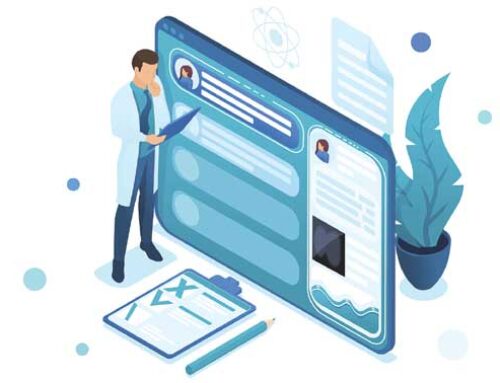 by Donna Vanderpool, MBA, JD
by Donna Vanderpool, MBA, JD
Ms. Vanderpool is the Vice President of Risk Management at
Professional Risk Management Services in Arlington, Virginia.
FUNDING: No funding was provided for the preparation of this article.
DISCLOSURES: The author is an employee of PRMS Inc., a risk-management consulting company for healthcare providers.
This ongoing column is dedicated to providing information to our readers on managing legal risks associated with medical practice. We invite questions from our readers. The answers are provided by PRMS, Inc. (www.prms.com), a manager of medical professional liability insurance programs with services that include risk management consultation, education and on-site risk management audits, and other resources offered to health care providers to help improve patient outcomes and reduce professional liability risk. The answers published in this column represent those of only one risk management consulting company. Other risk management consulting companies or insurance carriers might provide different advice, and readers should take this into consideration. The information in this column does not constitute legal advice. For legal advice, contact your personal attorney. Note: The information and recommendations in this article are applicable to physicians and other health care professionals so “clinician” is used to indicate all treatment team members.
Innov Clin Neurosci. 2020;17(1–3):49–50
Question:
A colleague of mine was sharing that she had a patient who is hearing-impaired insist that my colleague hire—and pay for—an interpreter to assist in the physician–patient communication process. It occurred to me that I do not really know the legal rights of patients with disabilities. What should I know?
About part Two:
As discussed in Part 1, the Americans with Disabilities Act (ADA)1 is a federal law, enforced by the Department of Justice, prohibiting discrimination2 on the basis of disability in employment, state and local government, public accommodations, commercial facilities, transportation, and telecommunications. States have also enacted laws with similar protections. The definition of “public accommodations” specifically includes healthcare professionals’ offices;3 accordingly, physicians cannot exclude or otherwise discriminate on the basis of a disability, and are required to reasonably modify their policies, practices, and procedures to allow people with disabilities to participate. There can be multiple impacts of the ADA law on a medical office. In Part 1, we covered patients who are hearing impaired. In Part 2, we will cover patients with mobility impairments, visual impairments, and service animals.
The ADA and Mobility Impaired Patients
Medical offices and services are expected to be fully accessible by those using wheelchairs and other mobility aids. If a parking lot is provided, it must provide accessible spots and ramps. At least one entrance to the building must be accessible. Once in the building, halls and restrooms must be barrier-free and doors should have accessible door handles. All patients must be able to reach the controls in elevators, and elevator door timers need to be adjusted so the doors do not close too quickly. It is important to keep in mind that both tenants and landlords have responsibility for ensuring access. In the office, counters (such as a reception desk) should be useable by patients in a wheelchair, or an alternative measure (such as a table) should be available. There should be a ramp as an alternative to, or instead of steps. For more information, see the United States (US) Department of Justice’s Access to Medical Care for Individuals with Mobility Disabilities.4
The ADA and Visually Impaired Patients
Clinicians need to ensure patients with visual impairments are able to access services. To ensure effective communication in navigating the office, raised letters and Braille should be used on relevant signage, such as for elevators and restrooms. Large print can also be effective, such as for building directories, and might make the sign easier to read from afar, such as by those in wheelchairs. Accommodations for services might include reading forms to patients and reviewing instructions. For more information, see the American Foundation for the Blind’s ADA Checklist: Health Care Facilities and Service Providers.5
The ADA and Patients with Service Animals
Service animals are defined as dogs that are individually trained to do work or perform tasks for people with disabilities, such as guiding people who are blind, alerting people who are deaf, moving a wheelchair, and calming a person with posttraumatic stress disorder (PTSD) during an anxiety attack. The work or task that the dog has been trained to do must be directly related to the individual’s disability. Animals whose sole function is to provide comfort or emotional support are not service animals under the ADA.
Miniature horses? While the ADA is specific that only dogs are recognized as service animals, the implementing regulations also allow miniature horses as service animals, but only those that have been individually trained to do work or perform tasks for people with disabilities.
No certification is required under the ADA, nor is the animal required to wear any type of vest or other identification. If it is not obvious what service or task an animal performs, only two questions may be asked:
Is the dog a service animal required because of a disability?
What work or task has the dog been trained to perform?
A person with a service dog cannot be asked to identify their disability, nor can they be asked to have the dog demonstrate its work or task it has been trained to perform.
Allergies and fear of dogs are not valid reasons for refusing services. A person with a disability can only be asked to remove his service animal from the premises if:
The dog is out of control and the handler does not take effective action to control it, OR
The dog is not housebroken
For more information, see the United States Department of Justice’s Service Animals Factsheet6 and Frequently Asked Questions about Service Animals and the ADA.7 Also, my colleague Ann McNary, JD has written “Vetting” Service Dogs and Emotional Support Animals in the January-February 2018 issue of this journal.8
Looking Ahead
Additional clarification on the government’s expectations about providing access to patients with disabilities might be forthcoming. With advancements in technology, what is “reasonable” in terms of a healthcare provider’s accommodation might expand. And websites (not addressed in the original statute decades ago) are an issue of litigation in terms of accessibility. So, brush up on current expectations and be prepared for those to potentially expand in the future.
Additional Resources
From the U.S. Department of Justice: Information and technical assistance on the ADA: https://www.ada.gov/index.html. ADA Information Line: 800-514-0301
From the American Medical Association: Access to Care for Patients with Disabilities –Strategies for Ensuring a Safe, Accessible, and ADA Compliant Office: https://www.ama-assn.org/media/24926/download
From the Northwest ADA Center: Accessible Health Care: https://adata.org/sites/adata.org/files/files/Accessible_Health_Care_final2019.pdf
References
- 42 U.S.C. § 12101. Americans with Disabilities Act of 1990.
- 42 U.S.C. § 12182. Prohibition of discrimination by public accommodations.
- 42 U.S. Code § 12181. Definitions.
- U.S. Department of Justice. Access to Medical Care for Individuals With Mobility Disabilities. www.ada.gov/medcare_mobility_ta/medcare_ta.htm. Accessed January 12, 2020.
- American Foundation for the Blind. ADA Checklist: Health Care Facilities and Service Providers. www.afb.org/blindness-and-low-vision/your-rights/advocacy-resources/ada-checklist-health-care-facilities-and.
Accessed January 12, 2020. - U.S. Department of Justice. Service Animals. www.ada.gov/service_animals_2010.htm. Accessed January 12, 2020.
- U.S. Department of Justice. Frequently Asked Questions about Service Animals and the ADA. www.ada.gov/regs2010/service_animal_qa.html. Accessed January 12, 2020.
- McNary A. “Vetting” service dogs and emotional support animals. Innov Clin Neurosci. 2017;15(1–2):49–51.





